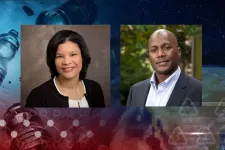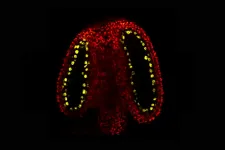Their new study, published online on July 1, 2021 in Cell Reports Medicine, shows that both CD4+ "helper" T cells and CD8+ "killer" T cells can still recognize mutated forms of the virus. This reactivity is key to the body's complex immune response to the virus, which allows the body to kill infected cells and stop severe infections.
"This study suggests that the impact of mutations found in the variants of concern is limited," says LJI Professor Alessandro Sette, Dr.Bio.Sci., study senior author and member of the LJI Center for Infectious Disease and Vaccine Research. "We can presume that T cells would still be available as a line of defense against viral infection."
The researchers emphasize that the study only addresses how the body's T cells respond to Variants of Concern (VOCs). The researchers emphasize that several of these variants, are linked to lower levels of virus-fighting antibodies.
The current study includes data on four of the most prevalent VOCs. Ongoing studies have been expanded to a larger panel of variants, including the Delta (B.1.617.2) variant, which became prevalent after this study had been initiated. The team has also established relationships with more than 20 different laboratories around the world to help monitor T cell reactivity to VOCs.
"These variants are still a concern, but our study shows that even if there is a decrease in antibodies, as other studies have shown, the T cells remain largely unaffected," says LJI Instructor Alba Grifoni, Ph.D. "The vaccines still work."
The Johnson & Johnson/Janssen COVID-19 vaccine was not part of this study because it was not available at the time the study was launched.
LJI findings guide COVID-19 vaccine efforts
This study was previously published online as a pre-print in March 2021. The findings were then highlighted by National Institutes of Allergy and Infectious Diseases Director Anthony Fauci, M.D., in a March 31 White House press briefing.
"We're learning more and more that these CD4+ and CD8+ T cells are very important in that they cross-react against certain viral variants," Fauci said.
In the time since the paper was first published, the researchers nearly tripled their patient cohort and performed an additional method of stringent statistical analysis. "We've also added an unexposed donor cohort," says study first author Alison Tarke, a Ph.D. student of the University of Genoa, guested in the Sette Lab at LJI.
For the new study, the researchers analyzed T cells from three different groups: people who had recovered from COVID-19, people who had received either the Moderna or Pfizer-BioNTech vaccines, and people never exposed to SARS-CoV-2 (from samples taken before the pandemic).
Both the recovered subjects and the vaccinated subjects were likely to have T cells that recognized the "ancestral lineage" of SARS-CoV-2. This was the original strain that emerged at the beginning of the pandemic; however, the virus has mutated since December 2019, and several variants have been identified as VOCs.
The question was whether people with T cells trained to recognize the ancestral strain would also recognize the new variants. The researchers tested T cell responses from the donor groups against four prominent VOCs: Alpha (B.1.1.7), Beta (B.1.351), Gamma (P.1) and Epsilon (B.1.427/B.1.429).
The researchers found that both vaccinated individuals and the recovered patients had cross-reactive T cells that could target these variants. That is good news for anyone who has received one of the two mRNA vaccines and for anyone who has recovered from any variant of the virus.
"With this study, the underlying message is optimistic," adds Tarke. "At least, as far as the T cell response goes, your immune system is still able to recognize these new variants and your T cells will be able to respond."
Similar results reporting largely unaffected T cell reactivity has now been presented through independent studies published in Nature and Science Immunology.
Study co-author and LJI Professor Shane Crotty, Ph.D., says this research highlights the importance of enlisting T cells in fighting SARS-CoV-2.
"COVID vaccines do a fantastic job of making antibodies that stop SARS-CoV-2 infections, but some of the vaccines do less well at stopping infections from variants," Crotty says. "You can think of T cells as a backup system: if the virus gets past the antibodies--if you have vaccine T cells the T cells can probably still stop the variant coronavirus infection before you get pneumonia."
Researchers are now looking for ways to take advantage of how flexible the T cells response appears to be. With T cells already working hard to recognize SARS-CoV-2 variants, Grifoni says future "booster" shots could increase immunity by prompting the body to produce more antibodies against the variants and/or by adding additional parts of the virus recognized by T cells.
"T cell epitopes are well conserved among SARS-CoV-2 variants, so incorporating T cell targets into future COVID vaccines could be a clever way to make sure future variants can't escape the vaccines," adds Crotty.
There is also the possibility that current SARS-CoV-2 research may one day lead to a universal, "pan-coronavirus" vaccine. This kind of vaccine would train the body to recognize the structural details, such as elements of the spike protein, that all coronaviruses have in common.
"This research shows that a pan-coronavirus vaccine is feasible," says Grifoni.
The group is now studying a much larger group of 12 different Variants of Concern (VOCs) and Variants of Interest (VOIs), including the Delta variant (B.1.617.2), Eta (B.1.525), Iota (B.1.526), Kappa (B.1.617.1), Lambda (C37) and the variants B.1.526.1, B.1.617.3, R1 and B.1.1.519.
Sette says he'd also like to study T cells from people who have been infected with the variants and see how those T cells react to the ancestral strain of the virus.
INFORMATION:
The study, "Impact of SARS-CoV-2 variants on the total CD4+ and CD8+ T cell reactivity in infected or vaccinated individuals" was supported by The National Institutes of Health's National Institute of Allergy and Infectious Diseases (AI142742, 75N9301900065, 75N93019C00001 and SARS-CoV-2 Assessment of Viral Evolution program (SAVE) ), the National Institutes of Health (grants U01 CA260541-01, AI036214), UC San Diego T32s (AI007036, AI007384), the Jonathan and Mary Tu Foundation, and a Clinical and Experimental Immunology Course at the University of Genoa, Italy.
Additional study authors include John Sidney, Nils Methot, Esther Dawen Yu, Yun Zhang, Jennifer M. Dan, Paul Rubiro, Aaron Sutherland, Eric Wang, Ricardo da Silva Antunes, April Frazier, Sydney I. Ramirez, Bjoern Peters, Richard Scheuermann, Stephen A. Rawlings, Davey M. Smith and Daniela Weiskopf.
DOI: 10.1016/j.xcrm.2021.100355
About La Jolla Institute for Immunology
The La Jolla Institute for Immunology is dedicated to understanding the intricacies and power of the immune system so that we may apply that knowledge to promote human health and prevent a wide range of diseases. Since its founding in 1988 as an independent, nonprofit research organization, the Institute has made numerous advances leading toward its goal: life without disease.





